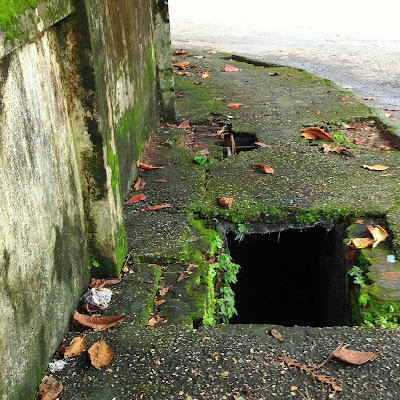Eric:
I’ve
had a handful of messages asking for more information about our apartment and
living conditions here in Yangon, so here’s a description and a few photos of
the apartment and our neighborhood.
Admittedly,
I sometimes refer to it as our “apartment”, and other times as our “hotel”; in
fact it’s both. We’re living in an
apartment in one of Yangon’s nicer hotels, the Inya Lake Hotel, a couple miles north of downtown Yangon. The property is primarily a hotel with typical
hotel rooms, but there are a handful of one and two bedroom apartments, as well
as some offices scattered among the hotel’s five floors. It's a decent sized apartment, probably about 1,000 sq ft (that’s 93 sq meters to some of you) with two bedrooms, two balconies, one bathroom, and a small kitchen. We’re allowed full run of the hotel facilities, laundry, gym, sauna, pool, tennis courts, etc, and breakfast in the hotel dining room is included in our rent.
 |
| Kinda looks like a cruise ship from this angle. |
 |
| Living room looking towards 2nd bedroom, a.k.a. Rossana's shoe closet. |
 |
| Galley kitchen. I pretend I'm cooking on a boat. A really, really small boat. |
Our
hotel was presented as a gift to the nation from the Soviet Union in 1962
during a state visit from Nikita Kruschev, back when Burma was flirting with
socialism. According to the hotel
website, the free form swimming pool was designed with input from Kruschev
[really? He took time out from the Cuban
missile crisis to design a pool?].
 |
| Yeah, that blue bridge just screams Nikita! |
The
hotel’s other claim to fame was as site of a grizzly murder of a 52 year old
Mitsubishi executive and his 21 year old female “houseguest” in one of the
hotel’s apartments during a botched burglary in 2002. Hmm, wonder if this has anything to do with
that chalk outline on our living room floor.
The
apartment/hotel is perched on the eastern edge of Inya Lake, an artificial lake
that was created by the British back in 1885 (then called Victoria Lake) to
provide drinking water to the city, and the largest lake in Yangon.
 |
| Shore of Inya Lake from the hotel. |
The
lake is one of Yangon’s historically more posh addresses, with residents
including Myanmar opposition leader Aung
San Suu Kyi [the
home where she remained under house arrest for almost 15 years], former head of
state and strongman Ne Win, as well as the US Ambassador, and more recently the
US Embassy. The western embankment of
the lake was also the site of the “red bridge” massacre, one of the most brutal crackdowns on protesting
university students by the military in March 1988. Today, the bridge is gone, and the road has
been renamed. Young lovers snog behind the
privacy of umbrellas, possibly unaware of the embankment’s infamous past.
 |
| Entrance to Aung San Suu Kyi compound. |
 |
| Get a room! |
Although
the lake is also home to the Yangon Sailing Club, Yangon Yacht Club, Myanmar
Yachting Federation, Myanmar Rowing and Canoeing Federation, and University Boat
Club, the only boats I’ve seen on the water since we moved in have been a
couple of kayakers last weekend, and the workers below, harvesting some sort of
greenery from the water possibly destined for a local salad bar.
 |
| Myanmar Navy |
A
short distance from us, hidden among some trees just south of the lake, is the
Lim Chin Tsong Palace.
 |
| Photo of palace taken shortly after WWII. (copyright expired) |
 |
| The palace today. |
Exclusive
local agent of the Burmah Oil Company
back at the turn of the last century, Lim Chin Tsong (“LCT” to his friends) was
a Rangoon born Chinese who inherited his father’s small rice trading company
and expanded it into petroleum, rubber, shipping, and other industries. He built his palace in 1918 out of mostly
imported materials, and was one of Rangoon’s leading citizens, awarded the
Order of the British Empire (OBE) by King George V. Ultimately, he’d lost most of his fortune by
1921 when the British government banned the sale of Burmese rice, except to
India. The local rice market collapsed,
taking much of what remained of LCT’s fortune with it. He died in 1923 and his estate was declared
insolvent in 1924. Since then, the
property has changed hands a few times, and most recently served as the Office
for Department of Arts until the federal government relocated to Naypyidaw, and in 2010 became the State
High School of Art. I tried visiting the other day, but the gates
were locked. Turns out it was a national
holiday and the school was closed. If I
ever get inside, I’ll put up some more photos.
Like
all of Yangon, there’s a lot of homeless dogs around our area, a few of whom have
adopted the front porch of the hotel as their sun shade. I bought some dog treats to give them, but
the hotel staff were decidedly unhappy with my largess for some reason.
 |
| Dog parking lot. |







































